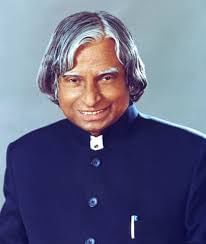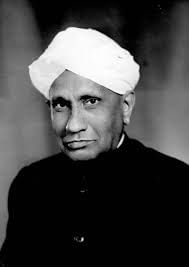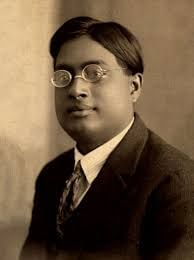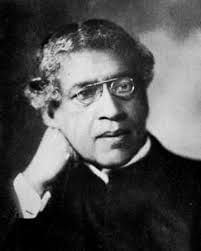Achievements of Indians in Science & Technology-1 | Science & Technology for UPSC CSE PDF Download
| Table of contents |

|
| APJ Abdul Kalam |

|
| CV Raman |

|
| Satyendranath Bose |

|
| Vikram Sarabhai |

|
| Homi J. Bhabha |

|
| JC BOSE |

|
APJ Abdul Kalam
Dr. A.P.J. Abdul Kalam was a man of many parts. Best known for the good nature he brought to the office of the president, he was also an author and inspirational speaker, a poet in Tamil, an amateur musician and polymath. Most of all, however, he was a scientist with a flair for inventiveness, adaptation and administration – qualities that propelled him to the frontlines of the national imagination when the rocketry that he devoted most of his professional life to helped India reach for the skies. Kalam was 11th President of India from 2002 to 2007.

Early Career at DRDO:
- Dr. Kalam commenced his professional journey at DRDO post his graduation from the Madras Institute of Technology.
- He became a member of the Defence Research and Development Service (DRDS) and joined the Aeronautical Development Establishment (ADE) within DRDO.
- Notably, he initiated his work by designing a small hovercraft, showcasing his innovative approach and technical prowess in aeronautics.
Expandable Rocket Project:
- In 1965, Dr. Kalam embarked on an independent endeavor within DRDO, focusing on an expandable rocket project.
- His initiative gained government approval in 1969, leading to the expansion of the project with additional engineering talent.
- This project highlights Dr. Kalam's leadership skills and his ability to spearhead ambitious technological ventures.
Project Devil and Project Valiant:
- During his tenure at DRDO, Dr. Kalam directed significant projects like Project Devil and Project Valiant.
- These projects aimed to develop ballistic missiles utilizing the technological advancements from the SLV programme.
- His involvement underscores his role in advancing India's defense capabilities through indigenous missile development.
Integrated Guided Missile Development Programme (IGMDP):
- Dr. Kalam served as the chief executive of the IGMDP, where he played a pivotal role in developing missiles like Agni and Prithvi.
- His leadership and technical expertise were instrumental in India's strides towards self-reliance in missile technology.
Contribution to Pokhran-II Nuclear Tests:
- As the Chief Scientific Adviser to the Prime Minister and Secretary of DRDO, Dr. Kalam played a crucial role in the Pokhran-II nuclear tests.
- His involvement highlights his strategic acumen and commitment to advancing India's defense and security interests.
Involvement with ISRO:
- Dr. Kalam was associated with INCOSPAR, the precursor to ISRO, established by Dr. Vikram Sarabhai.
- He contributed to setting up the Thumba Equatorial Rocket Launching Station (TERLS), laying the foundation for India's space exploration endeavors.
- Dr. Kalam's role as the project director of India's first Satellite Launch Vehicle (SLV-III) and his contributions to the Polar Satellite Launch Vehicle (PSLV) underscore his contributions to India's space program.
Inspiration to Youth:
- Dr. Kalam's impactful speeches and decisions have been a source of inspiration for the youth.
- His decision to forgo a comfortable life as the President of India to pursue teaching reflects his commitment to nurturing the next generation.
- This aspect highlights Dr. Kalam's enduring legacy as a mentor and motivator for aspiring individuals.
Diverse Interests and Talents:
- Dr. Kalam's interests extended beyond science and technology. He was a vegetarian and had a deep spiritual inclination, evident from his ability to recite the Quran and the Bhagavad Gita with equal ease.
- He was proficient in classical music and played the Veena with finesse, showcasing his artistic side.
- Dr. Kalam's literary pursuits, including writing Tamil poems and authoring several books, reflect his multifaceted personality and intellectual depth.
Whether it was his advocacy of nuclear weapons, his conversion – but only after leaving Rashtrapati Bhavan – to the cause of the abolition of the death penalty, his occasionally indifferent poetry, and his embarrassing fondness for getting audiences to repeat his homilies in unison, there was always a side of Kalam even his admirers may not have found appealing. But it was impossible to remain unmoved in his presence, his face often set to a stern expression like a schoolteacher who has struck upon an epiphany, his neatly partitioned mane of silver hair staying obediently out of the way. The success of the SLV-3 fetched him a Padma Bhushan in 1981; excellence at the DRDO, the Padma Vibhushan in 1990; and ultimately the Bharat Ratna in 1997.
CV Raman
- Raman Spectroscopy is a non-destructive technique used for chemical analysis, providing insights into chemical structure, phase, polymorphy, crystallinity, and molecular interactions.
- It involves the interaction of light with chemical bonds in a material, with a portion of scattered light exhibiting Raman Scatter, providing information about the analyte's chemical structure.

Raman Scatter:
- Raman Scatter occurs when molecules scatter incident light from a high-intensity laser source.
- Most scattered light matches the laser's wavelength (Rayleigh Scatter), offering limited information.
- A small fraction (typically 0.0000001%) scatters at different wavelengths, known as Raman Scatter, offering valuable insights into the analyte's chemical structure.
Application in Virus Detection:
- Researchers have utilized Raman Spectroscopy to detect RNA viruses in saliva samples.
- Given the presence of sufficient novel coronavirus in human saliva, this method becomes relevant for screening purposes.
- The study involved spiking saliva samples with non-infectious RNA viruses and analyzing them with Raman Spectroscopy.
Methodology:
- Researchers analyzed raw Raman Spectroscopy data, comparing signals from viral positive and negative samples.
- Statistical analysis of approximately 1,400 spectra per sample identified a set of 65 Raman spectral features sufficient for identifying the viral positive signal.
Significance:
- This approach could serve as the basis for deploying Raman Spectroscopy in managing viral outbreaks, including the COVID-19 pandemic.
- However, in the case of COVID-19, it serves primarily for screening due to its inability to detect viral-specific signatures.
- The process, requiring only a minute for data acquisition and analysis without additional reagents, offers a rapid and cost-effective screening solution.
- Portable Raman spectrophotometers installed at points of entry or care facilities can quickly screen individuals, enhancing public health measures.
Satyendranath Bose

Matter
- Matter encompasses all substances that occupy space and possess mass in the universe.
- It includes everything from the tiniest particles to massive celestial bodies.
- Matter is composed of atoms, which are the fundamental building blocks of all matter.
Atoms
- Atoms are the basic units of matter, consisting of a nucleus composed of protons and neutrons, surrounded by a cloud of electrons.
- Protons carry a positive charge, neutrons are neutral, and electrons carry a negative charge.
- Atoms are the smallest unit of an element that retains the chemical properties of that element.
Molecule:
- Molecules are formed when atoms chemically bond together through sharing or transferring of electrons.
- They represent the smallest unit of a compound that retains the chemical properties of that compound.
- Molecules can be simple, composed of two atoms of the same element (e.g., oxygen gas, O2), or complex, composed of different atoms (e.g., water, H2O).
States of Matter:
- Solid: Particles are closely packed together, maintaining a fixed shape and volume.
- Liquid: Particles have more freedom of movement, allowing them to flow and take the shape of their container while maintaining a constant volume.
- Gas: Particles have high energy and are spaced far apart, allowing them to fill the entire volume of their container and take its shape.
- Plasma: A state of matter with extremely high energy levels, where electrons are stripped from atoms, resulting in a mixture of positively charged ions and free electrons.
- Bose-Einstein Condensate (BEC): A state of matter formed at extremely low temperatures close to absolute zero, where atoms behave as a single quantum entity with wave-like properties.
Bose-Einstein Condensate (BEC):
- BEC was predicted by Albert Einstein and Satyendra Nath Bose nearly a century ago.
- It is created by cooling certain elements to near absolute zero, causing atoms to clump together and behave as a single quantum object.
- BEC is used to study quantum mechanics on a macroscopic level, simulate superfluid behavior, and explore phenomena like the particle-wave duality.
- Creating BEC in space is easier due to microgravity conditions, enabling longer persistence of the condensate compared to Earth-based experiments.
[Intext Question]
Vikram Sarabhai
Vikram Sarabhai was born on August 12, 1919.Sarabhai was instrumental in forming India’s future in astronomy and setting up the country’s space research facilities.

Formation of India's Space Research Efforts:
- Persuaded the Indian government to establish the Indian National Committee for Space Research (INCOSPAR) in 1962.
- Served as the first chairman of INCOSPAR, laying the foundation for India's space exploration endeavors.
Transformation into ISRO:
- Played a pivotal role in restructuring and renaming INCOSPAR to the Indian Space Research Organisation (ISRO) in 1969, facilitating a more organized and focused approach towards space research.
Establishment of Physical Research Laboratory (PRL):
- Founded the Physical Research Laboratory in Ahmedabad in 1947, initiating research activities on cosmic rays.
- Initiated operations from his residence, RETREAT, showcasing his dedication to scientific advancement.
Development of Rocket Launch Site:
- Established India's first rocket launch site in Thumba, Kerala, providing a strategic location for space research and experimentation.
Introduction of Cable Television:
- Facilitated the introduction of cable television in India through his connections with NASA.
- Played a key role in establishing the Satellite Instructional Television Experiment (SITE) in 1975, expanding access to educational television content.
Leadership in Satellite Development:
- Spearheaded the development of India's first satellite, Aryabhata, demonstrating India's capability in space technology.
Founding of Indian Institute of Management, Ahmedabad (IIMA):
- Contributed as one of the founding members of the prestigious Indian Institute of Management, Ahmedabad, a premier management institution in India.
- Received the Padma Bhushan in 1966 for his significant contributions to India's progress, particularly in the field of space research.
- Posthumously awarded the Padma Vibhushan in 1972, recognizing his enduring impact on Indian science and technology.
Vikram Sarabhai's visionary leadership and pioneering efforts laid the groundwork for India's remarkable advancements in space technology and scientific research, leaving an indelible mark on the nation's progress.
Homi J. Bhabha

Early Life and Education: Homi Jehangir Bhabha, born on October 30, 1909, was an Indian nuclear physicist renowned for his foundational contributions to India's nuclear program.
Academic and Professional Career: Bhabha served as the founding director and professor of physics at the Tata Institute of Fundamental Research (TIFR). He earned the epithet "Father of the Indian nuclear programme" for his pivotal role in shaping India's nuclear endeavors. Additionally, he served as the founding director of the Atomic Energy Establishment, Trombay (AEET), now known as the Bhabha Atomic Research Centre (BARC).
Contributions and Achievements: Bhabha's contributions were pivotal in establishing TIFR and AEET as key institutions for India's nuclear research. He received numerous accolades, including the prestigious Adams Prize and the Padma Bhushan. Notably, he was nominated for the Nobel Prize for Physics multiple times.
Initiation of Nuclear Programme: Bhabha commenced his nuclear physics career in Britain but returned to India before World War II. He played a crucial role in persuading senior leaders of the Congress Party, including Jawaharlal Nehru, to initiate India's ambitious nuclear program. This led to the establishment of the Cosmic Ray Research Unit and subsequent work on nuclear weapons.
Founding of Key Institutions: Bhabha established the Tata Institute of Fundamental Research in Bombay in 1945 and the Atomic Energy Commission in 1948, serving as its inaugural chairman. Nehru appointed Bhabha as the director of the nuclear program in 1948, tasking him with the development of nuclear weapons.
Legacy: Bhabha is widely acknowledged as the architect of India's nuclear power program. He advocated a strategy focusing on harnessing thorium reserves for power generation, distinguishing India's approach from that of other nations. This vision culminated in India's three-stage nuclear power program.
Homi Jehangir Bhabha's visionary leadership and pioneering scientific contributions continue to shape India's nuclear landscape, solidifying his status as a stalwart of scientific innovation and national development.
JC BOSE
 Sir Jagadish Chandra Bose was a biologist, physicist, botanist and an early writer of science fiction. He pioneered the investigation of radio and microwave optics, made significant contributions to plant science, and laid the foundations of experimental science in the Indian subcontinent. IEEE named him one of the fathers of radio science.
Sir Jagadish Chandra Bose was a biologist, physicist, botanist and an early writer of science fiction. He pioneered the investigation of radio and microwave optics, made significant contributions to plant science, and laid the foundations of experimental science in the Indian subcontinent. IEEE named him one of the fathers of radio science.
Multifaceted Contributions: Sir Jagadish Chandra Bose was a polymath, excelling in multiple fields including biology, physics, botany, and science fiction writing. He left an indelible mark on various domains of science, pioneering research in radio and microwave optics, plant science, and experimental science in the Indian subcontinent.
Pioneering Work in Radio Science: Bose's investigations into radio and microwave optics earned him recognition as one of the fathers of radio science by the IEEE. His groundbreaking contributions laid the foundation for subsequent advancements in these fields.
Innovation in Plant Science: Bose's contributions to plant science were equally remarkable. He invented the Cresco graph, a device for measuring plant growth, and made significant discoveries in plant physiology. His use of the Crescograph enabled him to scientifically demonstrate the parallelism between animal and plant tissues, advancing our understanding of botanical phenomena.
Father of Bengali Science Fiction: Bose is revered as the father of Bengali science fiction, showcasing his creative prowess alongside his scientific endeavors. His imaginative storytelling captivated audiences and enriched the literary landscape of Bengal.
Establishment of Bose Institute: Bose's vision for interdisciplinary research led to the establishment of Bose Institute in 1917, one of India's premier research institutions. Serving as its director until his passing, he fostered a culture of innovation and collaboration, nurturing generations of scientific talent.
Ethical Stance on Patenting: Despite peer pressure, Bose maintained a principled objection to patenting his inventions, emphasizing the pursuit of knowledge for the collective benefit of humanity. His commitment to scientific integrity and openness resonates with his enduring legacy as a scientist and scholar.
Experimental Innovations: Bose's construction of automatic recorders capable of detecting minute plant movements revealed astonishing insights into plant behavior, such as the response to stimuli and even interpreted as a semblance of feeling in plants. These experimental innovations underscore his pioneering spirit and relentless pursuit of scientific truth.
|
90 videos|491 docs|209 tests
|
FAQs on Achievements of Indians in Science & Technology-1 - Science & Technology for UPSC CSE
| 1. Who was APJ Abdul Kalam and what were his contributions to science and technology in India? |  |
| 2. What is the significance of CV Raman's discovery in the field of physics? |  |
| 3. How did Satyendranath Bose contribute to quantum mechanics? |  |
| 4. What role did Vikram Sarabhai play in the development of India's space program? |  |
| 5. What are Homi J. Bhabha's contributions to nuclear science in India? |  |





















